High-density polyethylene (HDPE) polyethylene pipe has good flexibility, strength, and cost, opening doors in the piping world. This formation examines the various applications and importance of marketing HDPE pipes in different fields. From water and gas distribution to industrial applications, HDPE pipes have always been an efficient and dependable option due to the pipes’ chemically, corrosion, and environment-resistant nature. With a growing need for green and effective infrastructures, it is more than essential why one should understand the place of HDPE piping in today’s engineering and construction. In such a manner, readers will understand why using HDPE polyethylene pipes will always provide a solution in any modern piping application.
What is HDPE, and How is it Used in Piping?
hdpe poly pipe
High-density polyethylene (HDPE) is a thermoplastic polymer made from ethylene and has a better density/strength ratio than most plastics. Interestingly, HDPE is widely used in piping due to its high flexibility, impact resistance, corrosion resistance, and good cost-effectiveness. It is vital in distributing water and gas, sewage systems, and industrial piping. Being flexible ensures that most installations are done easily, while being non-toxic means that the pipes can be used in drinking water systems. Also, most of the HDPE pipes are not affected by other fluids and gases, which allows many other applications for the transportation of pipes. In addition, strength and longevity also play a significant role in the complete sustainability of infrastructures from a development perspective.
Understanding HDPE Pipe Composition and Characteristics
Petroleum as feedstock for ethylene is the main component used for HDPE Pipes, which is converted to high-density thermoplastic through polymerization. Due to this composition, the finished products exhibit significant properties such as but are not limited to – high impact strength, good chemical resistance, and high strength-to-weight ratio. The raw materials used in HDPE manufacture ensure that the pipes are also resistant to extreme temperature variations and many chemicals without suffering degradation. The inner surface of HDPE pipes is smooth, which helps reduce friction losses and thus improves the flow rates. Basic technical parameters include:
- Density: The density of HDPE ranges from 0.93 g/cm³ to 0.97 g/cm3. Due to its low density, high-density polyethylene is light.
- Tensile Strength: The tensile strength of HDPE pipes varies between 20 and 37 MPa. These pipes can be used in high-pressure applications.
- Flexural Modulus: In a range of 600-800MPa, Constant bending stress is induced without damage to the system component.
- Thermal Conductivity: Usually, HDPE pipes’ thermal conductivities are around 0.5 W/mK, thus providing protection as a heat insulator but lower than metal pipes’.
- Temperature Range: The temperature range for HDPE pipes is between -40ºC and 60 ºC, therefore they can be used in many different climates.
These characteristics enhance the applicability of HDPE pipes in service utilities such as potable water supply, waste disposal, and gas systems and correspondingly modern industrial requirements for qualitative and efficient pipelines.
Typical Applications for Polyethylene Pipe
Pipes composed of polyethylene materials, especially High-Density Polyethylene (HDPE) are among the most preferred and applied pipes owing to their flexibility, durability, and resistance to different environmental factors. Below are typical uses that are apparent from information provided by confident industry leaders:
- Water Supply Systems: Potable water supply pipelines use HDPE pipes. These pipes are resistant to corrosion and, therefore, suitable for transporting water over long distances in urban and rural areas. Certain technical characteristics contribute to this durable product line, such as high impact and a large temperature range, which make it suitable for many climatic conditions.
- Gas distribution: Polyethylene pipes in the gas transporting industry have been quite popular for some time due to their high strength-to-density ratio and chemical resistance. These pipes can withwithstand the pressures that are common in gas distribution systems. Hence, natural gas and gas refound propane can be effectively transported over long distances without contaminating the gas or the pipelines. There is a residual tensile strength somewhat in the range of 20 to 37 MPa, supporting the pipe integrity even when operational.
- Sewage and drainage systems: intestines of the sewage system, porous structures. Regarding the construction of all types of buildings, the structure must have mechanical joints connecting to other plastic accessories. If there are no onsite disposal facilities, this internal coring reuses polyethylene pipes to accelerate sewerage disposal.
These applications also emphasize the benefits of using polyethylene pipes in modern infrastructure, which makes it more efficient and cost-effective in the long run.
Environmental Benefits of Using HDPE Pipes
- Reduced carbon footprints: The level of environmental pollution generally associated with the use of HDPE pipes is indeed lower than what would have been the case using Rosensteel pipes. This is due to their lightweight nature; hence, energy used in production and transportation is quite low.
- Longevity and Durability: The high-density polyethylene (HDPE) pipe is well designed to withstand environmental impact, so it has a long life span. It is normally used for over 50 years. This minimizes the rate of disposal and, thus, waste in landfills, encouraging sustainable development.
- Energy Efficiency: The hydraulic radius is defined as the extreme of the internal diameter of the HDPE pipe. This internal surface of the HDPE pipe helps to eliminate the removal of a large section of the external wall not needed due to very high fluid turbulence, which implies very high frictions that use up even more energy during fluid pumping. This makes it possible to effectively use energy over the pipe’s service lifetime.
- Recyclability: Once they have served their purpose and quality, these pipes can be made into other products, especially ones in high demand, like pipes, for instance, which curtail the levels of pollution.
- Control of leakage: One major means of preventing leakages in high-density polyethylene pipes is the use of very strong, seamless joints.
Technical Parameters:
- Density: Polyethylene pipes have a density between 0.941 and 0.965 g/cm3. Because of this property, they are soft or flexible and crack-resistant.
- Flexural Modulus: This provides the ability to bend without breaking. The loss typically expands around 800 MPa. Under the Floated Technique, the Supportable Load is approximately 800 MPa.
- Thermal Conductivity׃ The inferior thermal conductivity of HDPE pipes reduces heat loss of the transported fluids.
- Coefficient of Thermal Expansion׃ The coefficient of linear expansion of HDPE pipes is about 0.2 mm/m°C, thus allowing some degree of expansion and contraction without risk of damage.
Hence, these ecological gains justify the importance of HDPE pipes in promoting SDI solutions.
Why Choose HDPE Pipe for Your Projects?
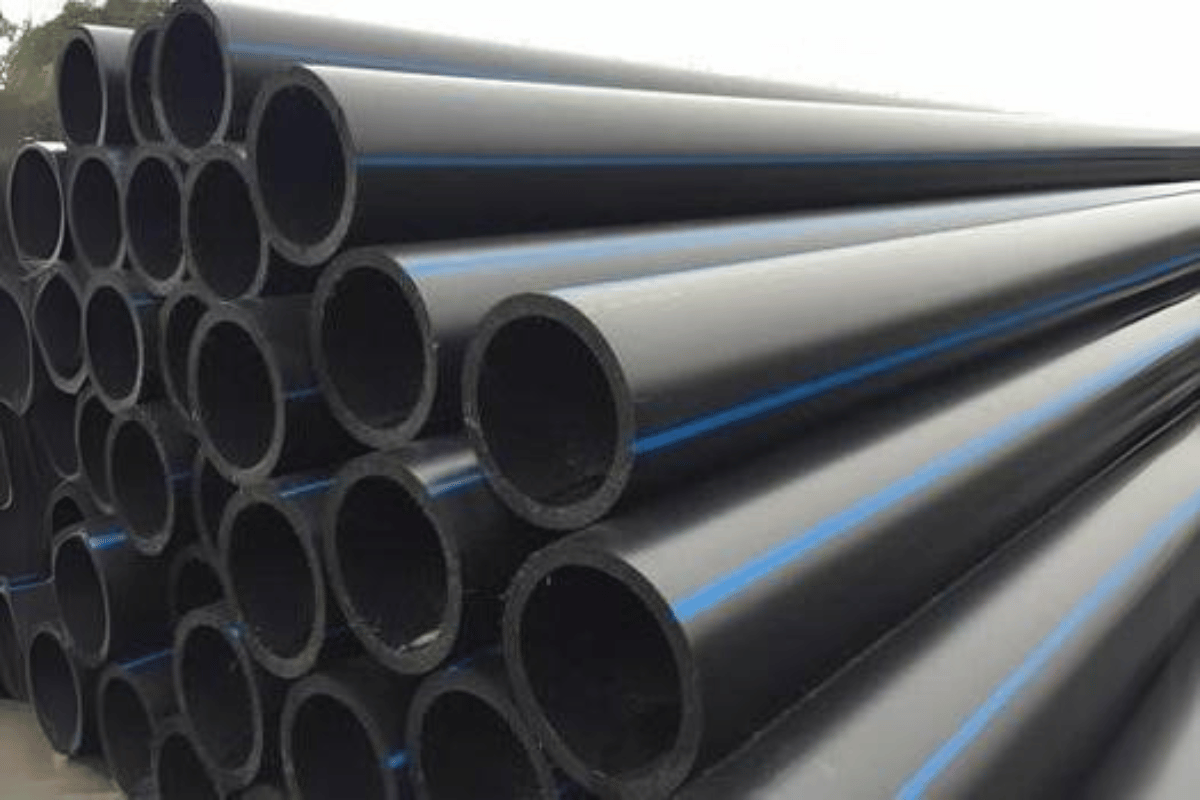
High-density polyethylene (HDPE) pipes are primarily favored in piping projects for their strength, low cost, and versatility. Their high resistance to chemicals and corrosion guarantees a longer service life while minimizing the need for repairs or maintenance, which is an advantage to business concerns and the environment. Though made of solid material, HDPE pipes are light in weight and can thus be easily carried and installed with a decrease in the cost of labor. Furthermore, HDPE’s pliable quality makes it perfect for places prone to landslides and earthquakes. Also, the water-carrying materials used are free from visiting environmental and human health hazards as they are not porous and do not leak. Moreover, HDPE piping is efficient and effective in its works and is a green product that can be recycled.
The Flexibility and Resistance of High-Density Polyethylene
High-density polyethylene (HDPE) possesses unique characteristics of superior toughness combined with flexibility, making it versatile for various usages. As reported by the foremost sources of the industry, HDPE pipes tend to be relatively bendable; rather than break under pressure, they can flex, a feature that is quite useful when operating in areas prone to earth or temperature movements. This feature is also backed up by their having a high “crippling” resistance to cracking or environmentally induced stress, further enhancing their longevity and safety over time.
The technical parameters of the flexibility and resistance of HDPE include:
- Tensile Strength is about 25 – 33MPa, which indicates a very high resistance to forces that seek to stretch the material.
- Elongation at Break: This remarkably ranges from 600-800%, meaning it is easier to pull the material to its very limits before it starts giving in.
- Temperature Resistance: This is -40°C to 60°C, which serves HDPE’s core purpose in different situations.
Such parameters justify its performance even when working under extreme conditions, confirming that the piping system contains adequate and advanced polyethylene pipes, such as HDPE.
Comparing Polyethylene Pipe to Traditional Materials
While assessing polyethylene piping against materials such as PVC, copper, or steel, it is simple to identify several advantages of the former. Piping systems made of polyethylene, especially HDPE pipes, are more flexible and corrosion-resistant, adding to their durability and cost-effectiveness. Many experts from sources such as The Plastics Pipe Institute concur that polypropylene pipes, unlike most other pipes, have no or fewer joints and fittings because they can be heat fused, limiting the need for maintenance and potential leak points. This is significant, especially in the water and gas industries, where leaks can cause unsafe conditions and cause businesses to lose money.
From the technical standpoint:
- Resistance to Corrosion: Contrasting with metallic pipes, polyethylene does not suffer from ‘rusting’ or ‘corrosion’, and it makes a great deal of sense in terms of industry where harmful products or temperature variation poses a better part of the application
- Elasticity: Polyethylene pipes can withstand ground movements and vibrations, as they do not break under stress, as is the concern with the use of stiff metal or PVC pipes.
- Life span: These PE pipes are very resistant to environmental stress cracking, so their life expectancy is between 50 and 100 years under normal operating/working conditions.
These properties explain why polyethylene continues to gain acceptance in modern piping trials, complementing the industry’s effort to promote green building and sustainable infrastructures.
Cost-Effectiveness and Longevity in Industrial Applications
A report on how economically and how long polyethylene pipes are likely to serve their industrial purpose provides blatant information from various authorities.
- Usability: Industry professionals, specifically the American Water Works Association, hold that polyethylene pipes last 50 to 100 years, cutting down on replacement cycles and costs over time. Their toughness also means that no constant repairs are needed, which means massive savings in the long run.
- Cost of Installation and Maintenance: The Plastics Pipe Institute outlines that ge Alamethylene ves pipes because Gmbh initiation has been simplified and sped because of the Lightweight ability and ease of use. It lowers labor costs and facilitates rapid response without much interruption. Also, it makes maintenance more accessible than the sheets guided by using metal since the pipes are more durable and do not corrode or get damaged by environmental factors.
- Reasons for Global Warming: Go Polyethylene, known for its top-notch market performance, claims that most disadvantages are avoided with the use of polyethylene because of the lower energy values required to make the products and better efficiency that reduces installation waste.
Technical Parameters:
- Corrosion Resistance: Polyethylene pipes possess the inherent capability to abstain from physical and chemical breakdown.
- Flexibility: Natural elasticity helps the pipe to endure natural earth movements and settling grounds.
- Temperature Range: The temperature range of -40°C to +60°C is applicable in many different climatic conditions in the manufacturing sector.
In summary, polyethylene pipes not only provide cost savings but also their increased durability justifies their use as a sustainable option in the industrial sector.
How to Ensure Proper Installation of HDPE Piping Systems?
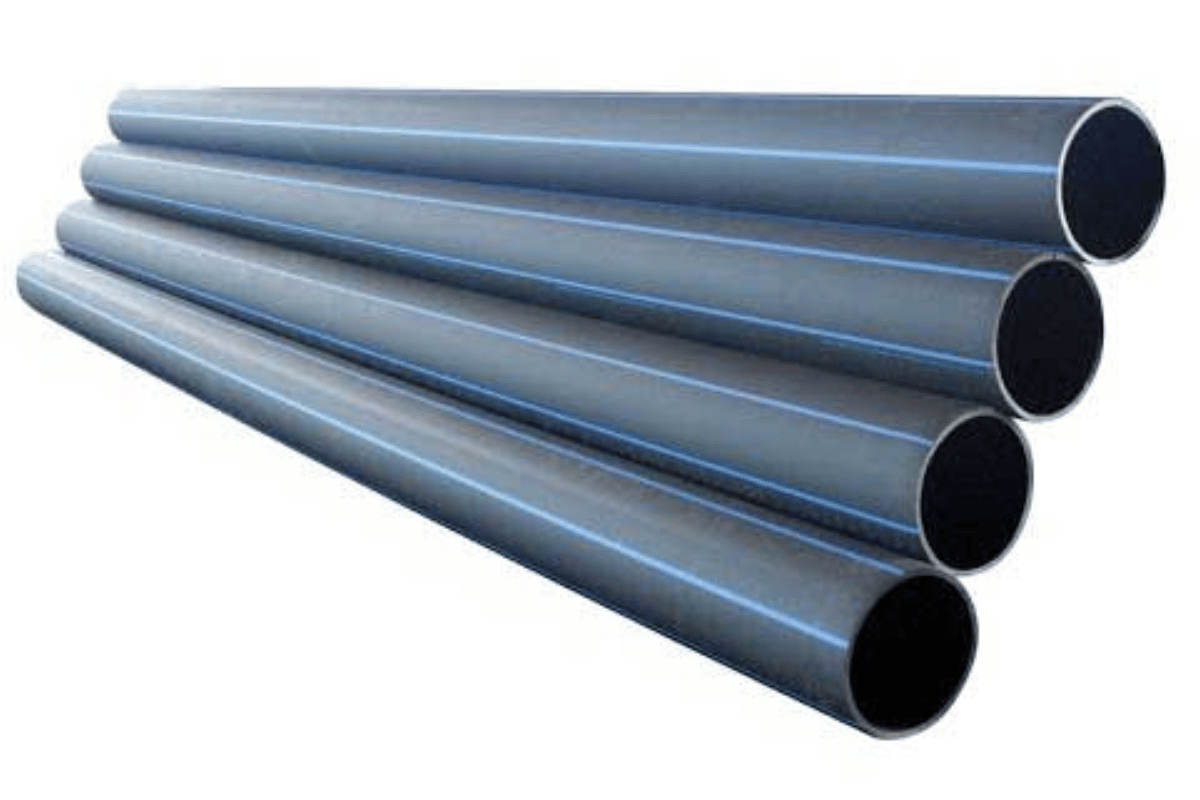
A great deal of caution is taken before burying the piping to avoid any single- or double-point failures throughout the system’s entire lifespan. Firstly, it is necessary to conduct a site inspection and planning with soil discrimination and routing to identify obstacles and lessen the impact during the implementation stage. Suppose the technicians understand the basic principles of working with HDPE materials and butt fusion associated with them. In that case, they will have minimum incidences of making flawed joints, leading to leak-free connections. Appropriate treatment of the elbows and practices of keeping them before mounting are equally important since they will ensure that piping is not ruined; the elbows should be held properly and shielded from too much sunlight.
Moreover, it is possible to choose others. Still, it is always a wise decision to comply with all the recommendations stated by the manufacturer, such as carrying out pressure tests of the systems post-installation. Adhering to these best practices guarantees both operational efficiency and safety.
Essential Fitting and Fusion Techniques
In HDPE piping systems, proper installation and welding requirements are focused on quality and accuracy to avoid the unreliability of systems operated. Following top industry sources, the following activities are indisputable:
- Butt Fusion: This technique is employed predominantly in the joining of thermoplastics such as HDPE pipes by butt fusion joining. This technique comprises heating the ends of two pipes and bringing them under pressure to enable the formation of a permanent necking joint. The significant parameters influencing the successful performance of butt fusion are the temperature settings, the pressure application, and the cooling time of the welded area. Butt fusion is generally carried out at 210° C – 230° C.
- Electrofusion: For this purpose, special couplings with electric heating tips are used. Applying electric current is sufficient to melt and weld the fitting and pipe together. Critical parameters are sufficient alignment, clean surfaces, and correct pressure and time, depending on the manufacturer’s manual, to ensure that all parts are properly bonded.
- Socket Fusion: It is mainly used for joining pipes of smaller diameters. After inter-fitting, the external surface of the pipe and the internal surface of the fitting are heated, and the two parts are assembled. The respective joints were designed with some specific parameters, such as the depth of the socket, the heating time of the socket or the pipe, and the joining pressure, which are critical peripherals for creating adequate seals.
When employing such techniques, if compliance with system design and proper technique usage are guaranteed, the service life of the HDPE piping systems is also increased. A qualified professional engineer or technician can always implement the techniques more effectively.
Best Practices for HDPE Pipe Installation
To ensure that the installation efficiency of HDPE pipes is at its best, observe the following quick tips that have been sourced from the best in the industry:
- Proper Trenching and Bedding: Ensure that the existing trenches are of appropriate depth and breadth so as to set the pipe and access it. The bedding material should not contain big rocks or any other debris that may damage the pipe.
- Correct Pipe Handling: Avoid stressing or damaging the HDPE pipes before installation and ensure proper storage. Instead of dragging the pipes on the surface, use slings or padded hooks when lifting and carrying them.
- Environmental Considerations: During the installation of the pipes, the surrounding temperatures and weather conditions affecting the flexibility and handling of the HDPE should also be monitored. Allow some relaxation before making the final alignment and any fusion of such pipes in cold conditions, as the material will not be that flexible.
- Jointing Techniques: As detailed previously, adhere to best practices directed at the incorporation of the upgrades to the existing pipeline, including joint butt fusion, electrofusion, and socket fusion. Clean all fusing surfaces before fusing so that leak-proof seals are made.
- Pressure Testing and Inspection: This system requires pressure testing after installation due to its service under pressure to identify any leaks present and confirm its service pressure. The durations and instructions for flushing the points are well-described and in line with industry recommendations for testing procedures.
Following these procedures, diligently cross-validated with the freshest information available on sites and by specialists, will improve the trustworthiness and the lifespan of your HDPE piping systems. The manufacturer’s guidelines and other relevant industry standards should always be adhered to for precise technical details concerning your application.
Key Considerations for Pipe Meets ASTM Standards
While meeting standards outlined by ASTM for HDPE pipes, it is always important to seek credible references to assess such standards and their comprehension. There are key industry websites that provide the context. Here are a few punctuations to mind:
- Material Grade and Specifications: Check if the HDPE compound supplied is consistent with the material grade demand according to the stated ASTM standards. This includes specifications of density, melt index, and tensile strength, thereby ensuring the suitability of the material for the needed application.
- Dimensions and Tolerances: As required by ASTM, ascertain that all pipe dimensions, diameter, and wall thickness, for example, adhere to the specified standards. Correct dimensional compliance provides assurance for the accurate and secure utilization of fittings.
- Pressure Ratings and Performance: Confirm that the pipe’s pressure class is appropriate to the conditions of service it was designed for. The necessary ASHTOO standards regarding pressure ratings are all-inclusive, as stress is a component most likely to be found during system operation and necessitates adherence.
- Testing and Quality Assurance: Undertake all other tests considered necessary by the specifications, including hydrostatic and burst tests, to evaluate the pipe’s performance under pressure and external conditions. These tests assist in validating that each cycle of HDPE pipe production attains acceptable quality control levels.
- Documentation and Certification: Gather all required documentation, such as manufacturer certificates and test results, for the pipe as evidence to EXPLAIN to what ASTM standards the pipe is manufactured. This also guarantees traceability and accountability in the supply chain.
If observed, these guidelines will, in the long run, ensure the quality and compliance of HDPE pipes with the ASTM standards, hence improving the performance of piping systems.
What are the Size and Specification Options for HDPE Pipe?
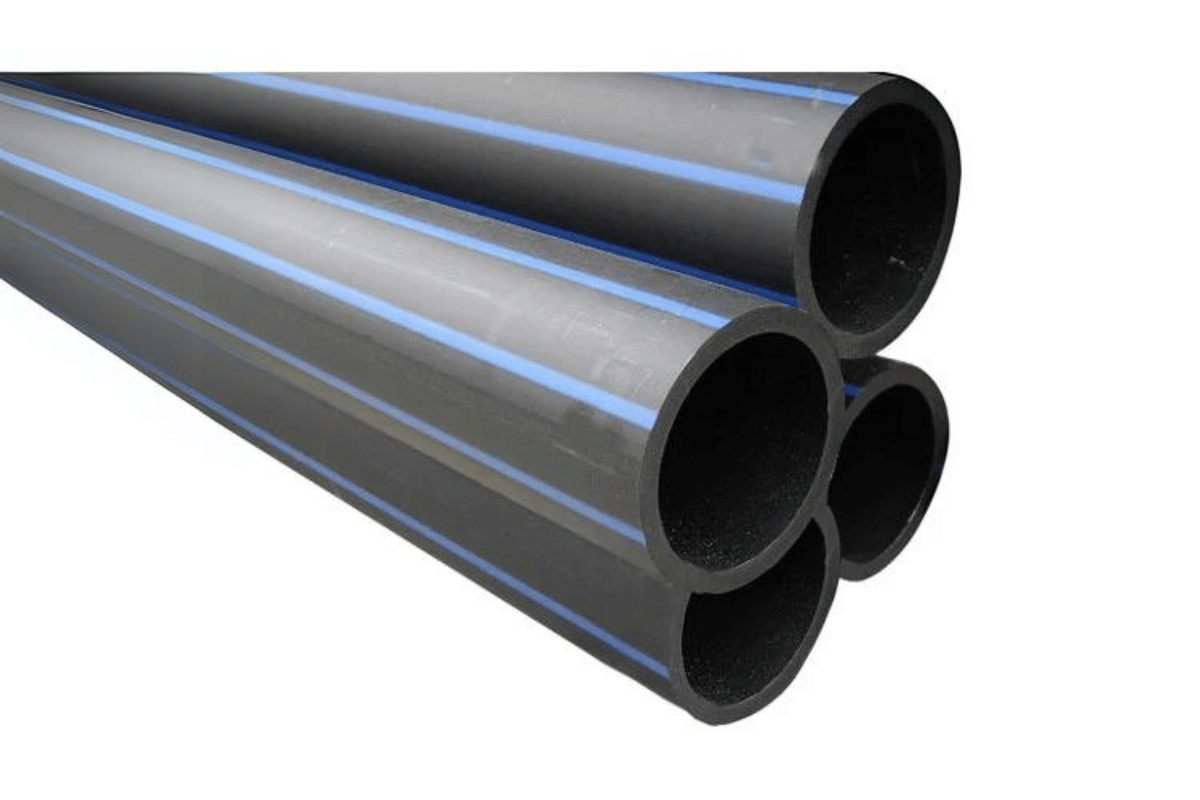
HDPE pipings have been produced in various sizes and specifications to meet different requirements. One of those specifications is the standard dimension ratio (SDR), which describes how the pipe diameter is related to the pipe wall thickness and is critical in attributing the pressure rating to the pipe. The more common SDR values are SDR 11, SDR 13.5, and SDR 17, where SDR 11 is declared best for high-pressure pipes. The nominal sizes of pipes with high-density polyethylene material are within the range of ½ inches and 65 inches in diameter, making them suitable for small domestic works and large industrial installations. Moreover, this material discourages binding because of its toughness in extreme environmental conditions. That is why pipe manufacturing is so popular. Manufacturers follow standards like ASTM and ISO to achieve uniformity and compliance with the industry’s requirements.
Choosing the Right Diameter and Length for Your Needs
The choice of the parameters diameter and length for the HDPE pipes depends mainly on the project’s particular use and other requirements. Here are the primary considerations:
- Application Requirements: The type of work that the pipe is to be used. Placing a pipe for water supply, gas distribution, sewage disposal, industrial usage, etc, will determine the diameter of the pipe. For example, high-volume water supply systems call for large diameters, whereas small diameters would cater to domestic building plumbing systems.
- Pressure Rating (SDR): The Standard Dimension Ratio (SDR) is essential for assessing a pipe’s pressure capacity. In areas of high-pressure use, pipes of lower SDR values (for instance, SDR 11) are the best since this type possesses thicker walls and hence can endure more significant internal pressure.
- Length Considerations: HDPE pipes come in standard manageable coils and straight lengths. Long coils are typically used for continuous-running pipelines or trenchless installations, minimizing the number of joints and reducing the risk of leakage. Straight lengths are better suited for less complicated installations.
- Site Conditions: Geographical location and other overground conditions: Sunlight, temperature, and soil textures can also determine the size and length of the pipe needed. HDPE’s durability, flexibility, and UV resistance characterize its usefulness in harsh climatic conditions.
- Technical Specifications: If dosing is selected, full compliance with the relevant standards, such as ASTM F2619 or ISO 4427, must be ensured for all selected pipes to avoid poor performance.
After you review the most applicable resources and specify the documents of manufacturers, you can make an appropriate selection of your HDPE pipe to respond to a project’s specific demands. Technical experts should corroborate these decisions.
Understanding SDR and PSI Ratings
When it comes to interpreting Standard Dimension Ratio (SDR) and pounds per square inch (PSI) ratings, the aspect of pipe quality and how each pipe may be used comes into play. In the dimensioning of pipes, SDR is the most important definition. Lower SDR means thicker pipes, hence greater pressure rating.
- SDR Ratings: According to high-level materials, SDR values fall into ranges between 7 and 26. For example, for SDR 11, lower SDR means thick walls and is fixed due to high-pressure application, hence more effective and reliable. This implies that thick walls are undesirable in high-pressure conditions due to higher SDR values.
- PSI Ratings: There is a close relationship between PSIS ratings and SDR, assuming that they affect the internal pressure-bearing capacity of the pipe. For example, the performance level of an SDR 11 pipe is rated at 200 PSI, while the SDR 17 pipe is rated at about 125 PSI. These ratings are provided to the engineers to maintain safety and performance conditions already defined.
- Justifying Selection: To justify the selection of a particular SDR and its corresponding PSI, specific project requirements, such as pressure, environment, or industry standard, must be considered. The decision-making processes are further enriched by the justification of information obtained from some of the major manufacturers or the relevant standards such as ASTM, ISO, etc., which all aid in selecting the suitable material for the given purpose.
So, selecting the right SDR and PSI ratings with appropriate terms and conditions should go along with a thorough assessment that should comply with the performance characteristics and technical specifications sourced from industry stakeholders.
Exploring PPI and ASTM D3350 Specifications
An analysis of the critical documents collected helps comprehend how the PPI (Plastic Pipe Institute) and ASTM D3350 specifications define the rationale and usage of polyethylene pipes as follows:
- PPI Guidance: Positioning of the Plastic Pipe Institute and its role in standardizing and improving the use of Plastic piping systems. The PPI provides a basis for quality management, such as the material’s properties, the loads to be applied, environmental conditions, etc.
- ASTM D3350: This specification pertains to the identification and membership of clear materials of extrudable pipe-grade polyethylene based on their density, melt index, tensile strength, etc. Equally important is the designating of a code PE compound, which provides consistency and clarity in the description of materials.
- Technical Parameters:
- Density Class (per ASTM): A letter and numeral representing Density (PE4710 denotes safe work stress).
- Melt Index: Tested under designed parameters as the operational processes that a product would be subjected to promulgate such flow properties.
- Tensile Strength is critical as it evaluates a pipe’s performance under internal and external pressures without subsequent rupture.
These parameters provide well-set criteria that aid in selecting materials based on comprehension of performance expectations, market specifications, and compliance with construction codes. These insights ensure that the selected materials will satisfy the required mechanical properties and performance aspects for various applications.
How Does HDPE Pipe Perform in Chemical and Industrial Environments?
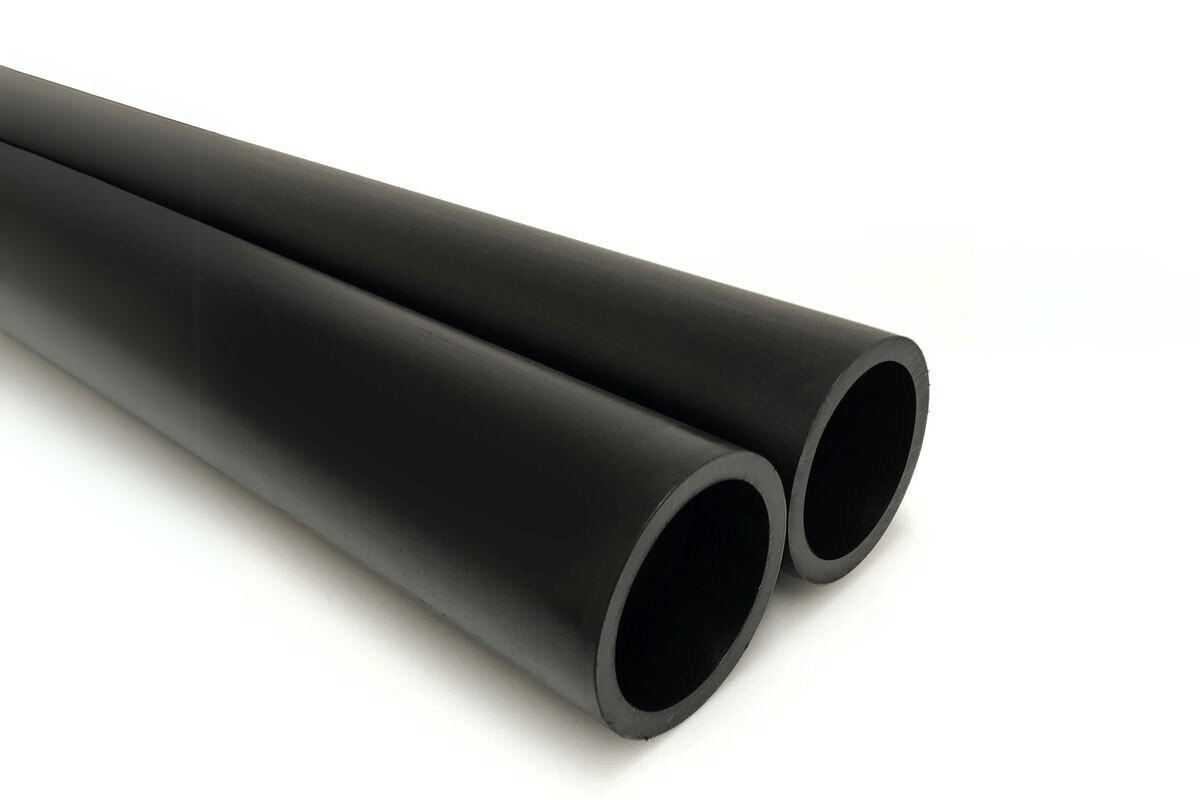
HDPE pipes are called geomembranes as they display versatility in the atmosphere of chemicals and in the industry due to their ability to withstand high resistance to many derailing agents such as acids, bases, and solvents. This material is suitable for use in environments where most other materials would be eroded, as this chemical resistance property assures durability. Another aspect of the energy-absorbing capacities of HDPE is its impact resistance performance, where, under mechanical forces, it does not crack. This is beneficial in industries where there are frequent vibrations and heavy weights. Also, its lightweight makes movement and installation convenient, thus time and costs may be reduced. In addition, it is also noteworthy that HDPE has an extensive temperature-resilient performance, indicating that it retains strength, which is initiated at extremes of hot or cold fluids. Overall, HDPE withstands stressors and serves the purposes required in many aggressive chemical and industrial environments.
Assessing Chemical Resistance of Polyethylene Materials
High-Density Polyethylene (HDPE) is known for its excellent chemical resistance, thus it is widely used in many other industries. Reports state that, other than water, the most aggressive of HDPE structures, including high-strength and high-density polyethylene, are tolerant to many solvents and chemicals like deep as well as weak acids, most of which can only be obtained in concentrated form due to their high strength. The molecular structure is responsible for this, as it renders a dense and non-polar surface, thus inhibiting any chemical attachment.
The most important relationships and factors involved in HDPE’s chemical resistance are shown here below:
- Chemical Compatibility Charts: Such documents describe the compatibility of some HDPE materials with specific chemicals and their resistance to various chemicals.
- Specific Gravity: This is low, in the range of about 0.941-0.965, water absorption, which adds to its chemical resistance properties as the polymer remains less weighty.
- Lastoms Hydrostatic Strength (LHS) shows the long-term ability of the material to withstand hostile environments, such as creeping conditions in water.
When the statements made above are compared with existing provisions in key industry documents, it is clear that using HDPE for long-term wear in corrosive environments in the manufacturing processes and effective operations has no undesired effects.
Applications in Gas Distribution and Sewer Systems
High-Density Polyethylene (HDPE) is extensively used in gas distribution techniques as well as sewers. It is adequately preferred due to its sturdiness and flexibility; hence, the associated fractures and leakages are minimized, which is critical in areas where safety and dependability are paramount.
1. Gas Distribution: In gas distribution utility, polyethylene HDPE pipes are the pipes of choice because they can withstand chemicals and resist the environment that causes stress cracking. These pipes can withstand considerable stress and are low permeability, making natural gas transportation secure and controlled. Further, due to the remarkable ease of handling the HDPE, fewer fittings are used, thus lowering repair needs in the future. The increments of these parameters and the technical issues take note of include:
- Thermal Fusion Joining: Future connections that are not leak-prone are the most preferred MW for high-pressure gas lines.
- UV Stabilization: Prolonged outdoor exposure to sunlight and parable solar Ultraviolet radiation leads to deterioration.
2. Sewer Systems: In sewer applications, the HDPE pipes also come with excellent longevity performance benefits from the chemical effluents and root infiltration. Due to the smooth inner surface of HDPE, dirt effluents contribute to basal deposit sedimentation and increase the flow rates, reducing blockage. Common technical aspects for sewer application which are seldomly emphasized include:
- Ring Stiffness (SN Ratings): Ring Stiffness defines the external soil pressure that most ductile pipes supported by soil would withstand. This is more than essential for below-ground applications.
- Abrasion Resistance: This guarantees the equipment’s usability in transporting abrasive slurries over a long period.
These parameters, in conjunction with information from the top global websites, illustrate that HDPE is very suitable and widely used in gas distribution and sewer infrastructure.
Innovation in High-Density Polyethylene Pipe Manufacturing
These days, it has become quite possible to alter corporate HDPE pipes beyond simple and rigid ‘drainage’ or ‘transportation’ structures. A set of the overall leading web pages on this issue highlight several information and solutions to this problem:
- Material Enhancements: Many new internal and external pipe protection measures have localized several internal and external areas and prevented piping collapse. Technical parameters such as enhanced density and molecular weight have been improved to advance other performance parameters such as tensile strength and crack resistance.
- Smart Manufacturing Techniques: Including modern methods such as automation and precision engineering has also brought about the required production standards, reducing rework levels of the products made. Better extrusion processes yield pipes with appropriate wall thickness and surface finish.
- Environmental Considerations: Some manufacturers are looking more toward green manufacturing methods. For instance, the use of post-consumer recycled HDPE in the production of these pipes helps to reduce the waste generation and carbon emissions associated with them.
Technical parameters supporting these innovations include:
- Enhanced Molecular Weight Distribution: Better environmental stress cracking resistance.
- Precise Wall Thickness Tolerance: This enables proper operational reliability even above the intended load conditions.
- Percentage of Recycled Content: This measures the product’s sustainability in terms of environmental concerns.
The combination of the above and others justifies why HDPE pipes should be maintained and expanded across more industrial application areas.
Frequently Asked Questions (FAQs)
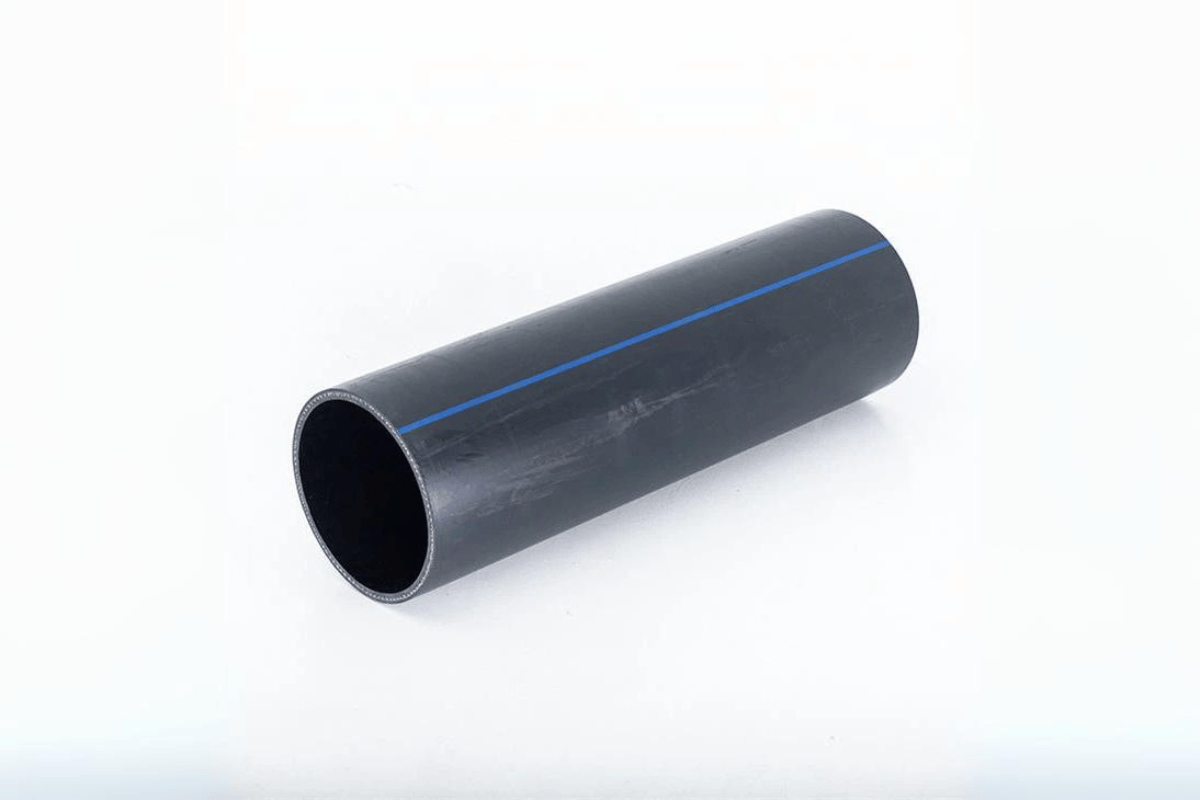
1. What are HDPE pipes primarily used for?
HDPE pipes are commonly used in water supply systems, sewage systems, and natural gas distribution due to their durability, flexibility, and resistance to corrosion.
2. How do innovations in HDPE pipe manufacturing impact their performance?
Innovations such as material enhancements and intelligent manufacturing techniques improve the HDPE pipes’ performance by increasing their tensile strength, resistance to cracking, and ensuring uniform wall thickness. These improvements lead to better overall reliability and efficiency in various applications.
3. Why is the use of recycled content in HDPE pipes important?
Incorporating recycled content reduces environmental impact by decreasing waste and lowering the production process’s carbon footprint. It also supports sustainability goals without compromising the pipes’ quality or performance.
4. Are HDPE pipes environmentally friendly?
Yes, HDPE pipes are considered environmentally friendly due to their recyclable nature and the manufacturers’ focus on sustainable production practices, including post-consumer recycled material.
5. How does enhanced molecular weight distribution benefit HDPE pipes?
Enhanced molecular weight distribution bolsters the pipes’ resistance to environmental stress cracking, making them more durable under varying conditions and extending their lifespan.





